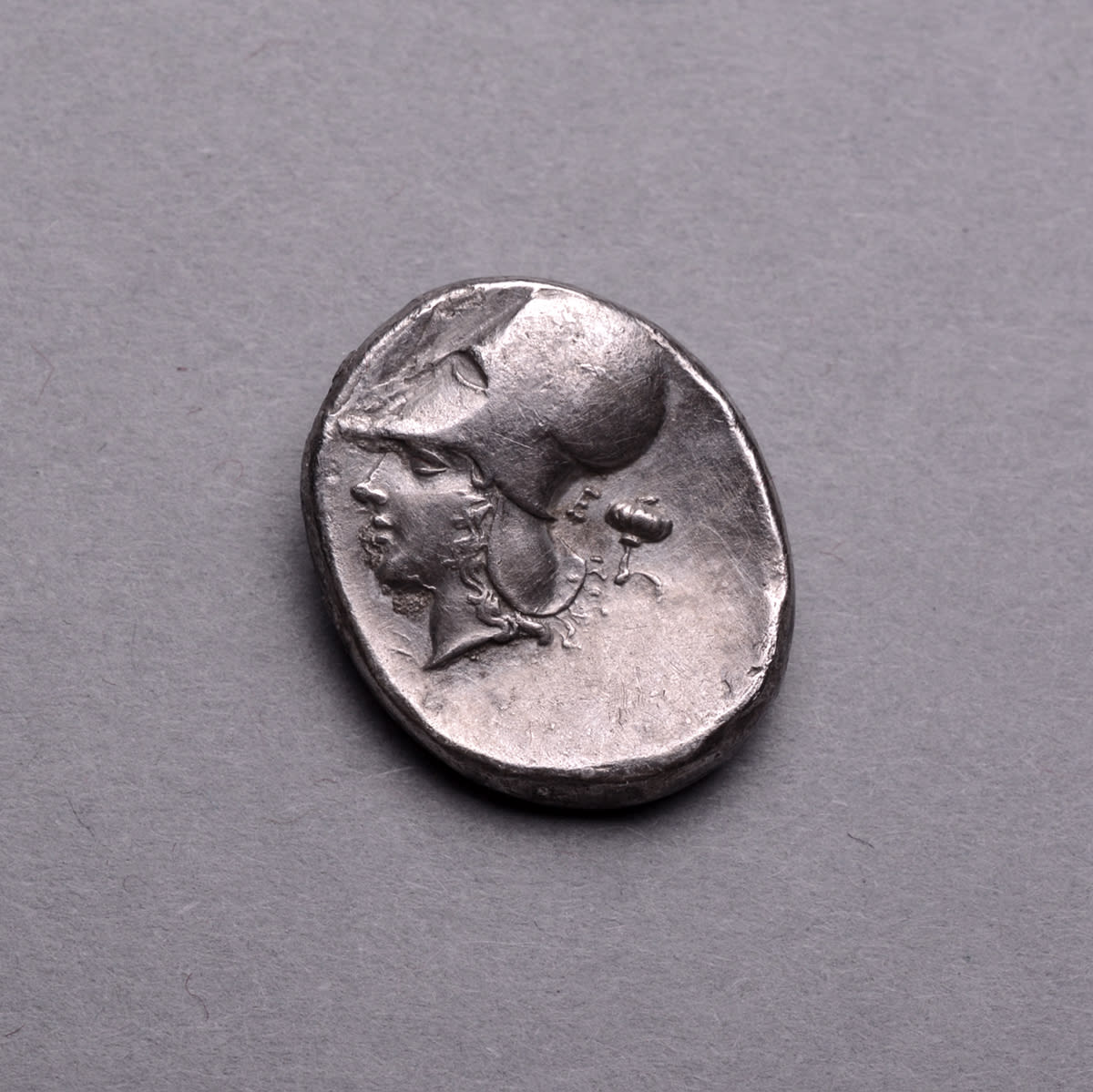Corinthian Silver Stater, 405 BCE - 307 CE
Silver
8.2 Grams
C.4085
Obverse: Pegasus Flying towards the Lef Reverse: Helmeted Head of Athena, Facing Left Corinth, located on the narrow isthmus between northern Greece and the southern peninsula (Peloponnese), was one of...
Obverse: Pegasus Flying towards the Lef
Reverse: Helmeted Head of Athena, Facing Left
Corinth, located on the narrow isthmus between northern Greece and the southern peninsula (Peloponnese), was one of the great cities of the ancient world. The site seems to have been occupied in Neolithic and Mycenaean times, but truly came into its own in the eighth century B.C., when eight small villages united to form the city. Corinth quickly became rich and famous for the export of its beautiful geometric and animal pottery. By the mid-eighth century it had became populous enough to establish colonies in Ithica and Korkyra on the Aegean islands, and Syracuse in Sicily. Controlling land and sea communications between central and southern Greece, it remained a major power until it began to be eclipsed by Athens in the sixth century B.C. It remained a key player in the Classical and Hellenistic eras, though usually in alliance with more militarily powerful city-states, until its final destruction by the Romans in 146 BC.
More than money, coins are a symbol of the state that struck them, of a specific time and location, whether contemporary currencies or artifacts of a long forgotten empire. This stunning hand-struck coin reveals an expertise of craftsmanship and intricate sculptural detail that is often lacking in contemporary machine-made currencies. The Corinthian stater was the primary trade coin of central to Northern Greece and the Eastern Adriatic coast. This Corinthian stater features Pegasus on the obverse and the head of Athena clad in a Corinthian soldier’s helmet on the reverse. Variations of this type were struck both by Corinth and its many colonies, including, for a time, mighty Syracuse. Termed "colts" or "Pegasi," the coins were as popular as the widely used "owls" of Athens. This magnificent coin is a memorial to the ancient glories of Corinth passed down from the hands of civilization to civilization, from generation to generation.
Reverse: Helmeted Head of Athena, Facing Left
Corinth, located on the narrow isthmus between northern Greece and the southern peninsula (Peloponnese), was one of the great cities of the ancient world. The site seems to have been occupied in Neolithic and Mycenaean times, but truly came into its own in the eighth century B.C., when eight small villages united to form the city. Corinth quickly became rich and famous for the export of its beautiful geometric and animal pottery. By the mid-eighth century it had became populous enough to establish colonies in Ithica and Korkyra on the Aegean islands, and Syracuse in Sicily. Controlling land and sea communications between central and southern Greece, it remained a major power until it began to be eclipsed by Athens in the sixth century B.C. It remained a key player in the Classical and Hellenistic eras, though usually in alliance with more militarily powerful city-states, until its final destruction by the Romans in 146 BC.
More than money, coins are a symbol of the state that struck them, of a specific time and location, whether contemporary currencies or artifacts of a long forgotten empire. This stunning hand-struck coin reveals an expertise of craftsmanship and intricate sculptural detail that is often lacking in contemporary machine-made currencies. The Corinthian stater was the primary trade coin of central to Northern Greece and the Eastern Adriatic coast. This Corinthian stater features Pegasus on the obverse and the head of Athena clad in a Corinthian soldier’s helmet on the reverse. Variations of this type were struck both by Corinth and its many colonies, including, for a time, mighty Syracuse. Termed "colts" or "Pegasi," the coins were as popular as the widely used "owls" of Athens. This magnificent coin is a memorial to the ancient glories of Corinth passed down from the hands of civilization to civilization, from generation to generation.
